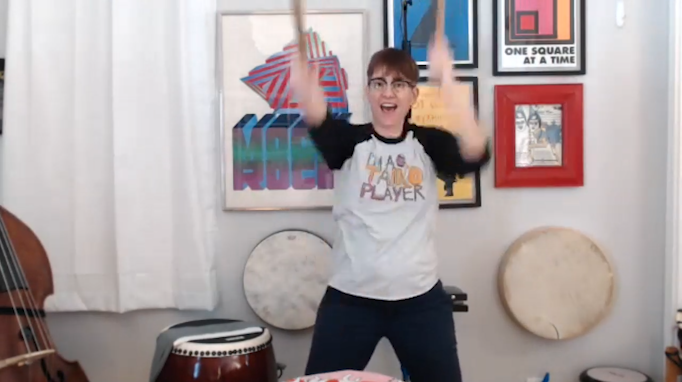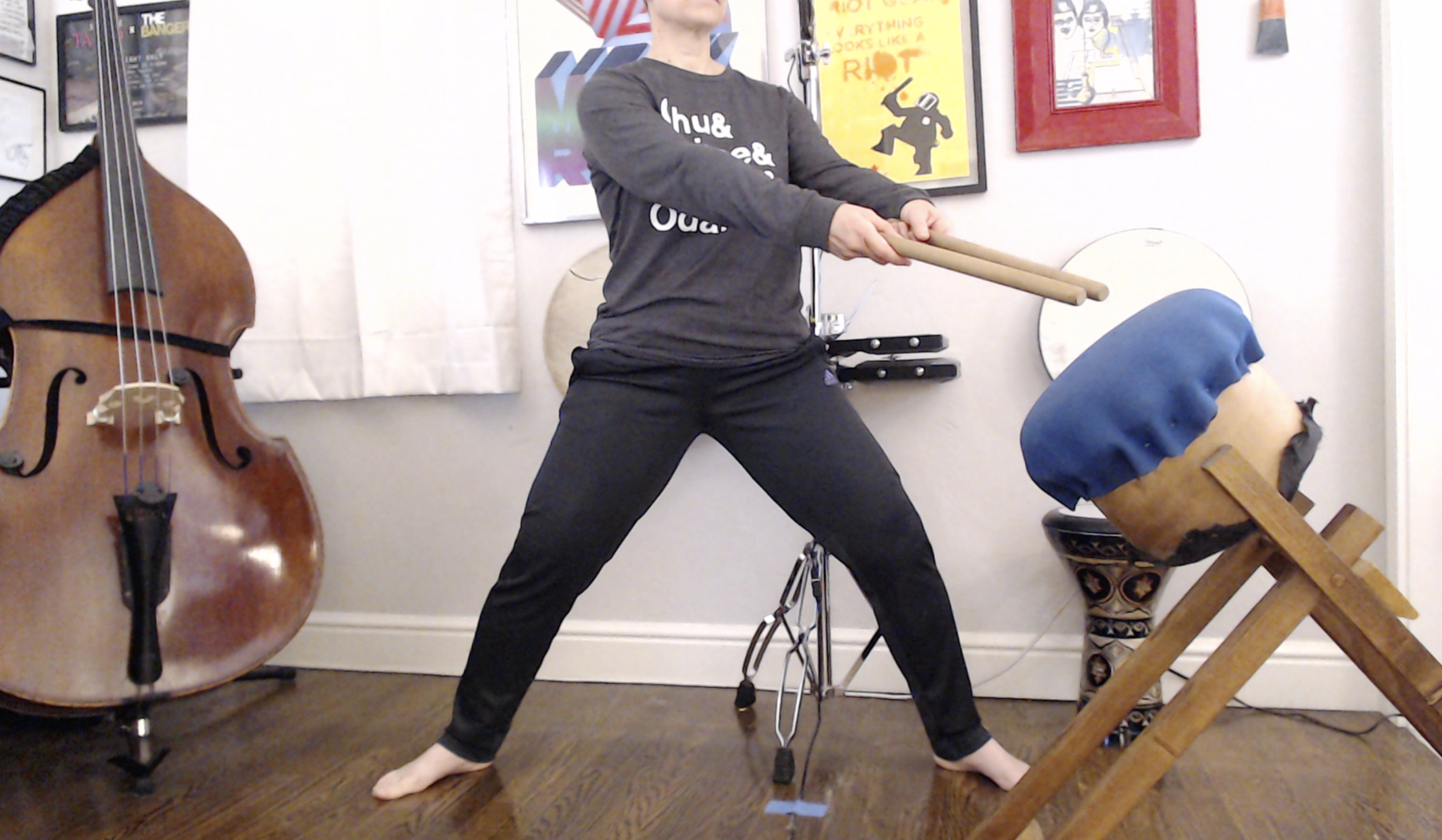Whatever ages you’re teaching, you can help your students build confidence with creating rhythms if you scaffold well. I wrote the short poem “My Taiko Teacher” to help the students practice pulse in a 4th/5th grade virtual program I just finished. (The students LOVED the poem - never underestimate the power of making fun of yourself!)
The poem works great for practicing pulse. You can also use it in the following activity to help students take the first steps in creating their own rhythm patterns:
Provide this link to your students (I put it in the chat for my virtual program; if you’re working in person, work with the classroom teacher to see how students can access a computer during your class. Alternately, you could ask the classroom teacher to have students print the slide out and bring it to class with you, and then change beats with markers.)
This is a “Make a Copy” link that will prompt students to each make their own copy of the slide that they can then work with. If you’re not familiar with this technique, I highly recommend Katie Wardrobe’s webinar Google Slides for Music Teachers. Actually, I highly recommend Katie Wardrobe, period. I’ve learned SO MUCH listening to her.
If your students aren’t familiar with Google Slides, share your screen and show them how to click inside the green boxes and edit the text.
For my residency, I didn’t cover ka and kara because the students were all using rolled up towels as their playing surface . This is great for lowering barriers to participation, but not great for ka and kara.
Give them a few seconds to change a note, and then have everyone play. If you’ve covered the idea of playing with a jiuchi, then play a ji, but if you haven’t, then play the poem with them without any changes.
Go through this process several more times until they’ve changed 4-8 of the notes.
You probably noticed that the poem makes liberal use of pickup beats. If your students are more advanced, point that out and talk about it. If they aren’t, then just tell them there’s a reason that “My” and “I” are in parentheses and leave it at that. Of course, explain if they ask, but my students didn’t.
Let me know if you try this with any of your students and how it goes. Happy teaching!























